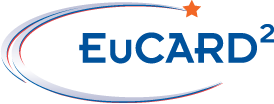Visit the WP5 website.
Objectives
The XBEAM network goes beyond the successful achievements of the EuroLumi NA of EuCARD, concentrating on the issues of high-intensity/high-luminosity hadron ion and electron accelerators, where EuroLumi has acquired international recognition. The novelty of this network is to open the platform to all research accelerators that are facing similar issues (excluding Linear Colliders that are covered elsewhere): hadron colliders, high-intensity rings, FFAGs, superconducting hadron and electron linacs. The EuCARD-2 ambition is that this NA truly becomes the brainstorming place for accelerator science.
- Identify & characterize luminosity limitations for HL-LHC, LHeC, SuperKEKB, HE-LHC and RHIC-II in theory, simulations & experiments
- Study and record the applications of proton and ion accelerators in the range 10 MeV to 1 GeV and the types of accelerators used.
- Study and discuss limitations for high current SC linacs with long pulse or cw operation, including energy recovery, such as optics design, ion accumulation, beam break up, halo development, beam losses
- Compare and help optimize frontier projects like XFEL, ESS, HP-SPL, R-L LHeC, MESA, MYRRHA, Project-X, and eRHIC
- Provide a platform to discuss critical issues related to highly polarized lepton and hadron beams
Tasks
- Coordination and Communication
- Extreme colliders (XCOL)
- Extreme performance rings (XRING)
- Extreme SC linacs (XLINAC)
- Extreme polarization (XPOL)
The EuCARD-2 Networks share a common platform for information exchange and collaboration, the EuCAN Coordination of Accelerator Networks.
